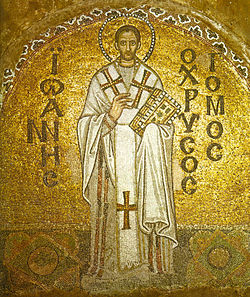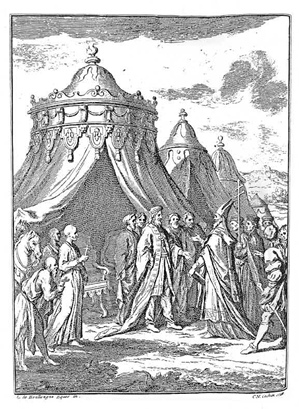 In the fourth century when Christianity became a legally-recognized religion, emperors had much to say about doctrine. Constantine I backed the Trinitarian definition — a coequal God the Father, God the Son, and God the Holy Spirit — but his sons and later rulers favoured the Arian position of the Son as a lesser, created being. Julian the Apostate, on the other hand, favoured a return to the good old pagan pantheon.
In the fourth century when Christianity became a legally-recognized religion, emperors had much to say about doctrine. Constantine I backed the Trinitarian definition — a coequal God the Father, God the Son, and God the Holy Spirit — but his sons and later rulers favoured the Arian position of the Son as a lesser, created being. Julian the Apostate, on the other hand, favoured a return to the good old pagan pantheon.
On this date in 380, the co-emperors (Theodosius and Valentinian are portrayed on the coin above) opted for a return to Trinitarianism and condemned other views as heretical. The proclamation reads:
EMPERORS GRATIAN, VALENTINIAN AND THEODOSIUS AUGUSTI. EDICT TO THE PEOPLE OF CONSTANTINOPLE.
It is our desire that all the various nations which are subject to our Clemency and Moderation, should continue to profess that religion which was delivered to the Romans by the divine Apostle Peter, as it has been preserved by faithful tradition, and which is now professed by the Pontiff Damasus and by Peter, Bishop of Alexandria, a man of apostolic holiness. According to the apostolic teaching and the doctrine of the Gospel, let us believe in the one deity of the Father, the Son and the Holy Spirit, in equal majesty and in a holy Trinity. We authorize the followers of this law to assume the title of Catholic Christians; but as for the others, since, in our judgment they are foolish madmen, we decree that they shall be branded with the ignominious name of heretics, and shall not presume to give to their conventicles the name of churches. They will suffer in the first place the chastisement of the divine condemnation and in the second the punishment of our authority which in accordance with the will of Heaven we shall decide to inflict.
GIVEN IN THESSALONICA ON THE THIRD DAY FROM THE CALENDS OF MARCH, DURING THE FIFTH CONSULATE OF GRATIAN AUGUSTUS AND FIRST OF THEODOSIUS AUGUSTUS
Within a few years imperial “desire” turned to persecution and Arian churches were ordered shut down. Like all ancient decrees, however, there was always a large gap between proclamation and enforcement; Arianism continued to be popular in parts of the empire, especially after the borders were penetrated by Arian-professing barbarians.













